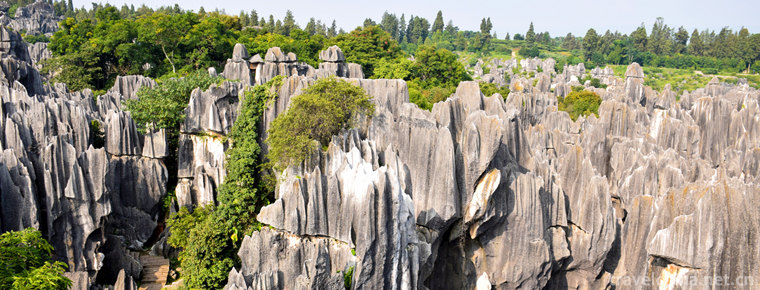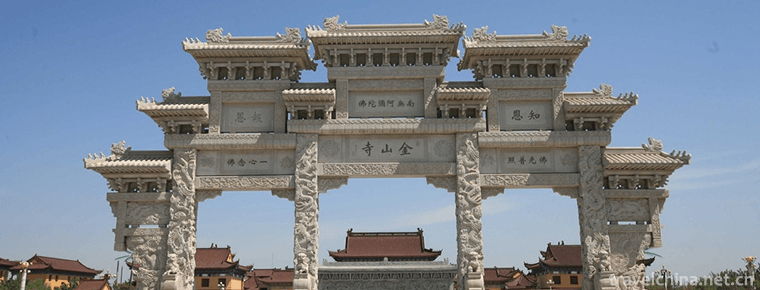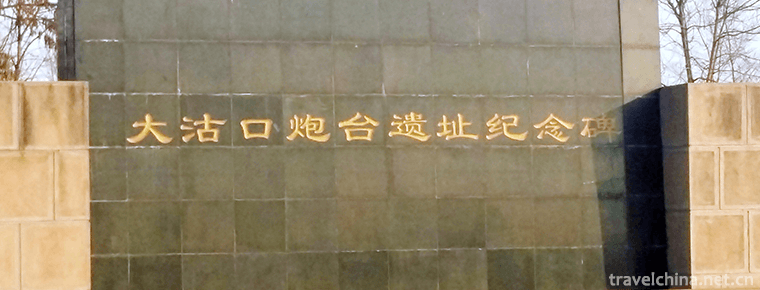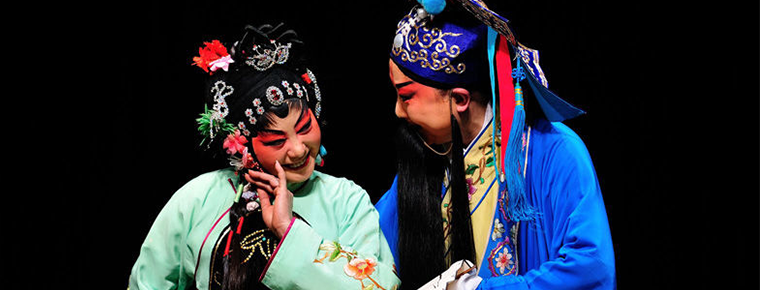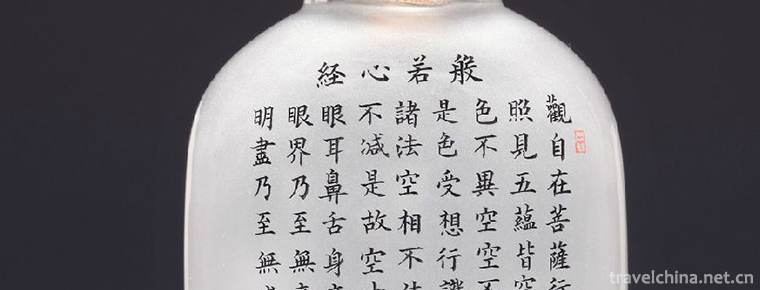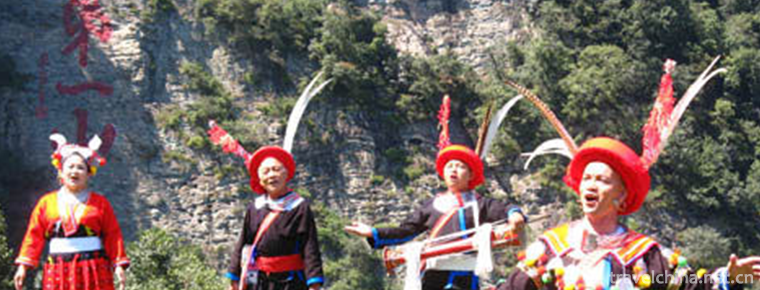Legend of Luban
Legend of Luban
Luban legend is one of Shandong local folklores.
The Spring and Autumn Period and the Warring States Period witnessed great social changes in China during the transition from slavery to feudalism. Craftsmen have gained a certain degree of freedom. The emergence of new productivity and the change of production tools have created conditions for the improvement of technology.
Lu Ban was a craftsman of the State of Lu in the late Spring and Autumn Period. His name was Gong Shui Pan. Public tray has made outstanding contributions to process Manufacturing in this period. Because of his outstanding skills and being a native of Lu, he was later called "Lu Ban" (general).
The earliest record of Lu Ban's deeds is Mozi, which is also recorded in Li Ji Tan Gong, Customs and General Meanings, Shui Jing Zhu, Shu Yi Ji, Youyang Miscellaneous Figures, and some notes and local chronicles.
On June 7, 2008, the legend of Luban was approved by the State Council to be included in the second batch of national intangible cultural heritage list.
Luban introduction
Lu Ban was born in about thirteen years of King Zhou Jing (507 B.C.) and died in the twenty-fifth year of King Zhou Zhending (444 B.C.) under the surname of Ji. He was named "public loser" and "class loser". He was honored as "public loser". In the Spring and Autumn Period of China, Lu people, because he was from Lu, were also called Lu Ban or Lu Ban, commonly known as "Lu Ban".
As an outstanding inventor in ancient China, his name and stories have been circulating among the people for more than two thousand years. Civil craftsmen in our country honor him as their ancestor.
Story legend
Meng pan Zi
According to legend, during the Spring and Autumn Period, the kindhearted Lu Ban parents lived the life of mountain people at sunrise and sunset. After her mother was pregnant with Lu Ban, she was still reluctant to rest and insisted on delivering meals to her husband who had stoned in the mountains. One day at noon, Lu Ban's mother, who was pregnant with Liujia, went to deliver her meals. When she climbed the upper half of the mountain, she suddenly felt weak and sat down on the boulder to rest. Gradually, confused into sleep. At this time, she seemed to see her husband was lifting up a big blue and shining rock, when she came forward to help him, she felt a sharp pain - gave birth to Lu Ban. Lu Ban was born because of his mother's dream of rock, so he got the nickname of "rock".
Legend of invention
Luban Charm records: Fu Yi, natural landscapes, town house floor, resistance to all disasters, the house is lucky, the family is prosperous and healthy. Interpretation: The first apprentice of Lu Ban, natural landscape is the implication of good geomancy in fairyland. It refers to the land lord (god) in the natural landscape fairyland. Natural landscape also implies that Mount Tai can be a town house. All disasters, strong winds and waves, thunder and lightning ghosts, and the land God Mount Tai can resist. Disasters are resisted by the floor of the house. There is no disaster in the family, and conforming to nature brings good luck and prosperity to the family. Developed. (We could have used no boards, just one word is enough, because Luban was the originator of the mummy craftsmen.
Architectural category
Such legends have been circulating for a long time, and modern folklore also includes: the cracks in the White Pagoda of Baita Temple in Beijing were well given by Lu Ban; the Jiming Yishiqiao Bridge near Baoan in Hebei Province was not completed, because when Lu Ban built the bridge, his sister (or sister) was afraid that he was too tired to learn the chicken crow in advance, and Lu Ban stopped working because of it; the Yongle Palace in Shanxi was built by Lu Ban; the stone statue of Beishan Mountain in Dazu Mountain in Sichuan Province. The three stone towers on the West Lake of Hangzhou are the three feet of the stone incense stove that Luban chiseled to suppress the essence of black fish, among which the legend that Luban built Zhaozhou Bridge is the most famous. The book "Huhai News Yi Jian Xuan Zhi" (Volume 2, Later Collection) compiled in the early Yuan Dynasty is included.
In 507 B.C., Luban was born into a poor craftsman's family. As a young man, he took part in labor, was good at studying and had many inventions, which undoubtedly occupied an important position in the history of ancient science and technology in China. It is also said that Luban was born in an aristocratic family, devoted to engineering technology and invented many new weapons. However, there are few records of him in historical books. We can hardly find many reliable materials about his experience. However, there are many legends about him, some of them are written in ancient books and some of them are spread among the people.
Legend has it that Luban used wood to make cars, horses, controllers, and install organs. Then he asked his mother to sit in the car and start the organs. The car ran without trace.
Lu Ban Qiao
In Luzhai Village, the hometown of Luban, there is a big river in front of the village. It is very inconvenient for villagers to enter and exit. So the craftsmen in the village decided to build a bridge to facilitate the villagers'travel. However, one of the common faults of these craftsmen is that they are not serious about their work. One day, an old man with a white beard came, and he was always walking around the construction site. Later, some villagers were curious about the old man, so they often gave him some food and invited him to stay at night. So the old man said to the family, "I don't have anything to give you either. Make a bunker for you." The old man was very careful in hitting the nest. He measured it and did it. He dared not be careless at all. The bridge builders laughed at him: "It takes so much effort to make a stone nest?" Who knows, when the bridge closes, it just misses a piece of stone, which is not going to be ready in a moment and a half. The more anxious I am, the less beautiful I am, the more cloudy I am, and the heavier it is going to rain. If the stone arch can't close the dragon gate properly, the work of these months must be done in vain! ___________ Just then, the old man with white beard came and said, "Don't worry, look at the stone bunker I made. Is it right?" Stonemasons moved to and fro in the middle, and it was no different. Where are the shadows when the craftsmen look for the old man to thank them? Only one note left said: "Madaha construction, bridge arch out of deviation; return stone, Lu Ban back home." Only then can we know that Grandpa Lu Ban has manifested his spirit! ___________ Since then, the craftsmen here have never dared to work carelessly.
Invention saw
The carpenter's saw is said to have been invented by Luban. There were no saws. The woodworkers used axes to cut wood. Once, Lu Ban was working on a hill when he suddenly got a cut in his hand, blood flowing. When he looked for it, it turned out to be a silk grass, which had many hard and sharp teeth, and its skin and flesh were broken. Luban was inspired by this: if we use metal to make long strips with teeth, can't we saw wood? So Luban invented and manufactured a metal saw. According to archaeological materials, there were toothed clams and sickles in our primitive society and small copper saw in Shang Dynasty. )
Divine saw
The monarch of the State of Lu was to build a temple of the Queen Mother. Skillful craftsmen were summoned and Luban was among them. Among the masons, there was an old man Li, whose wife died early, and only one daughter named Ganoderma lucidum, who went up to the mountains to deliver meals to his father every day, and also washed and mended Lu Ban. Over time, the two gradually developed feelings. Once, Ganoderma lucidum accidentally sprained his feet on the mountain. Luban was very distressed. He climbed to Lingquan Mountain in Jiehe Town to collect herbal medicine to apply his feet to Ganoderma lucidum. Who knows, when climbing the mountain, he was accidentally cut by a piece of grass. Lu Ban carefully looked at the grass, and found that the edges of the grass leaves, arranged with sharp teeth, Lu Ban tried with his fingers, very sharp. Luban suddenly had a surprise in his heart: this toothed grass can cut people's hands. If it was replaced by iron, would the toothed iron chip cut wood? When he returned home, he found an old kitchen knife, carefully tapped out the small teeth, and scratched on a piece of wood. In a moment, he cut the wood in half. Luban was so happy that he let the blacksmith make sharp little teeth on the blade and try to use them to saw wood. Who knows, the wood was broken in a few strokes. Luban invented the saw in this way, "saw" means "scratch and pull". Later, just as Luban was going to marry Ganoderma lucidum, there was a change. It turned out that Lord Zhifu had discovered the beautiful Ganoderma lucidum and wanted to take her away as a little wife. If Li Laohan did not allow it, it would be difficult for him to know the government. He was asked to build a jade screen from a big white stone on the Bank of Ruoxi at the foot of Mount Tai in three days. What about this? Li Laohan was so anxious to jump off the cliff that Lu Ban was too worried to sleep. At this time, Tai-platinum star to Lubanto dream, said at the foot of a hundred-year willow tree buried under a machete, can be cut into saws. Lu Ban hurried to do what Tai Buckingstar said and made a saw. Who knows how to use this saw to saw the stone, just like cutting face, the big white stone is carved into a jade screen in a twinkling of an eye. Later, on the day of Lu Ban's wedding, Shensao turned into a giant dragon and flew away with Lu Ban, Ganoderma lucidum and Lao Han Li. From then on, they lived a happy life.
Building "Spring and Autumn Pavilion"
It is also said that in ancient times, on the construction site of a "Spring and Autumn Pavilion" (memorial pavilion), the teacher was worried. According to the design, the girders made of yellow wattle are too short, and the pavilions made of purple sand stone are too heavy to lift. Suddenly an old man came and asked for work and food. Teacher said, the following work is not yet know how to do, to eat, you go to the kitchen! After a while, the teacher went to the kitchen to see that the old man did not know where to go, but he saw a strange phenomenon on the table: a pile of rice fell on the table, with a bowl closed on it; a chopstick rested on the bowl, two leftover fish holding both ends of the chopsticks. The teacher thought for a moment, suddenly realized, immediately called the craftsmen, made two big wooden fish, held the beam made of yellow wattle, not only solved the short problem, but also very good-looking. Then, bury the whole pavilion with soil, pull up the heavy purple sand stone pavilion cover along the slope, find the right position, and erect it on the beams and columns. Finally, remove the soil, and the pavilion is built. Everyone said that the old man was Lu Ban. Thanks to his advice, he solved the problem.
Zhaozhou Bridge, named "Anji Bridge", was originally designed and built by Li Chun, a craftsman of the Sui Dynasty. The so-called "Lubanxiu Zhaozhou Bridge" is purely a folk tale, not a historical fact. The above-mentioned Luban's construction in various places, as well as some inventions and creations listed under his name (such as saw-making), are also legends created by the people in different historical periods, not the achievements of public transportation in the Spring and Autumn Period.
Lu Banye Yanbai Pagoda
The White Pagoda of Miaoying Temple, located in the north of Neijie Road, Fucheng, was built from the Yuan Dynasty to the 16th year of the Yuan Dynasty (1279). It is the earliest and largest Tibetan Buddhist Pagoda in the Yuan Dynasty in China and an important building preserved by the Yuan Dynasty. Legend has it that there are seven iron hoops on the tower, which is Lord Luban's masterpiece.
It is said that the White Pagoda suddenly cracked a big mouth, just when people were at a loss, Lubanye incarnated as a bowl craftsman, quietly put the white pagoda. Now the white tower has been painted several times, seven iron hoops have disappeared, but the seven rows of rusty nails on the tower, as well as those slight protrusions, seem to be witnessing the truth of this legend.
Of course, the people who built the pagoda were actually Anigo, Nepalese, formerly Nepalese royalty. In 1260, they led a team to build the Golden Pagoda in Tibet. Later, they came to Yuandu and stayed in China for 45 years. They built more than ten religious buildings and dedicated a large number of works of art with strong Nepalese flavor.
Scorpion cage for corner building
The corner building is the most distinctive building of the Palace Museum. It is said that when Zhu Di, Chengzu of the Ming Dynasty, built Beijing, he dreamed that there were nine beams, eighteen pillars and seventy-two ridges around the imperial city, which coincided with his imagination of "seeing from all sides and hearing from all sides", so he ordered the craftsmen to build the corner buildings according to the image in his dream. At this time, Lord Luban appeared again. He became an old man selling scorpion cages. He secretly pointed out that the craftsmen had repaired the corner building as it is today according to the shape of the scorpion cage.
In the corner building, there is no pillar, stairs and floors. How could such a complex building not even have a pillar? In fact, the rhombus windows on all sides are false windows, with brick walls built inside. Such ingenuity, it is said that it is master Luban's masterpiece, but also deserves.
However, Ma Tianlu, a carpenter, actually presided over the construction of the Forbidden City Corner Building. After careful calculation, he used the mortise and tenon techniques of traditional carpentry to combine tens of thousands of parts and make the whole Corner Closely seamed.
summary
In the Spring and Autumn Period and the Warring States Period, there was a skillful craftsman named Lu Ban, legendary known as "the ancestor of carpenters". One day, Lu Ban passed a place in Sichuan and saw a big stone bridge under construction. According to the design of Zhao Zhangmo, the bridge body can not be closed.
Luban chiseled a big stone and gave it to Cui Er, a poor girl who was about to marry but could not afford to buy her wedding dress. At the close of the stone bridge, Cui Er donated the stone. The bridge was created and Cui Er's dowry was not worried.
In a temple built somewhere in the south of the Yangtze River, it is stipulated that the main beams should be made of yellow Jingshu and the pavilions should be made of cinnabar. Zhang Zhangmo, the master who built the temple, was very worried. Lu Ban came up with the methods of "Lu Qiangliang" and "Tudui Pavilion", which enabled the temple to be built.
The emperor wanted to build the corners of four palaces. It was stipulated that each corner must have nine beams, eighteen columns and seventy-two ridges. Many masters of design and architecture were unable to meet this requirement. Seven masters were killed by the emperor. Finally, the project fell to Master Li Zhangmo, but he could do nothing about it. Lu Ban heard about it and thought hard day and night. A few days later, he asked a girl named Qiaoer to make a wheat straw scorpion cage according to her own design size and give it to Master Li Zhangmo. Inspired by this, Li finally built the corner building.
Dehe Garden Theatre Building
The legend of Luban had a new version in the Qing Dynasty. Legend has it that Cixi was not addicted to the Liguan theatre every time she went to the Summer Palace, so she ordered the construction of a grand stage, requiring the stage to be built into three realms: human, heaven and hell. "Immortals should come down from the sky, and imps should come out of hell."
One day, Lord Luban came to the construction site as an old man selling pancakes. The pancakes were very special: three layers inside and outside, slightly warped on both sides, several holes in the middle, and salt was put on them. Lubanye muttered straight in his mouth, three layers, leaving holes and putting salt (eaves). After Master Lu Ban left, a clever craftsman came to his senses. This is Master Lu Ban's confusion. So immediately following the three-storey, hole-leaving and eaves tips, we built today's Dehe Garden Theatre Building.
After completion, the Dehe Garden Theatre Building is divided into three floors. It can be called Futai on the top, Lutai on the middle and Shoutai on the bottom.
Inheritance significance
The craftsmen of past dynasties hoped to improve their ability to conquer nature and improve technology, and imagined Luban as a craftsman with magical skills and infinite wisdom. The people praised Lu Ban's "ingenuity" very early, saying that the wooden birds he made could fly, the wooden man could work, the lampstand he built could be lit to separate the sea water, his ink bucket could pop the wood out of the line, he could use saliva to glue the broken wood into beautiful beams and columns, he could build three bridges overnight, and so on.
In the old times, craftsmen's admiration for Lu Ban was also reflected in their folk activities. In the past, carpenters, bricklayers and masons all worshipped Luban as their "ancestors" and built temples for him. The book compiled in the early Ming Dynasty about the French style of civil craftsmen was named "The Book of Lu Ban", which also specifically talked about "the origin of Lu Ban immortal teachers". The legend of Luban played a great role in uniting and educating craftsmen.
In addition to spreading among the Han people, the legends of Luban are also spread among some ethnic minorities (such as Bai, Zhuang, Miao, Yao, Yi, Shui, Tujia, Gelao, Buyi, etc.).

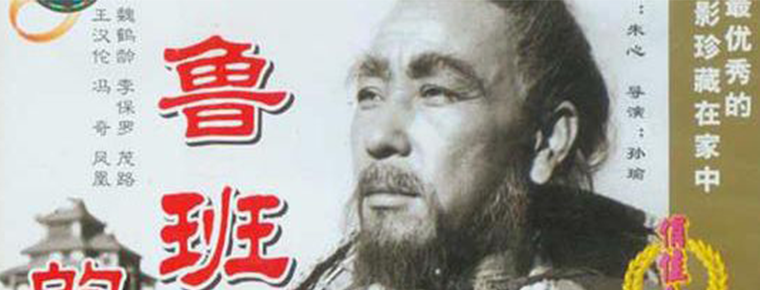
-
Kunming CityStone Forest Scenic
Kunming Stone Forest Scenic Area, also known as Yunnan Stone Forest.
Views: 290 Time 2018-10-21 -
Crucian carp tofu soup
Carassius auratus tofu soup is a famous dish of the Han nationality. It belongs to Guangdong cuisine. It tastes salty and delicious. Carassius auratus has a very good milk-stimulating effect.
Views: 942 Time 2018-11-02 -
south china botanical garden
The South China Botanical Garden of the Chinese Academy of Sciences, which belongs to the Chinese Academy of Sciences, is one of the most important botanical and ecological research institutions in Ch.
Views: 132 Time 2018-12-26 -
Island Jinshan Temple
Jinshan Temple, located in the northern part of Qingyun County, Dezhou City, Shandong Province, was built in the Sui Dynasty and flourished in the Tang Dynasty. It is said that the island Jinshan Temp.
Views: 109 Time 2019-01-13 -
Tanggu Dagukou Battery Site Museum
Dagukou Battery Site Museum is located on both sides of the Haihe River estuary in the southeast of Tanggu, Tianjin Binhai New Area. It is a national education and youth education .
Views: 153 Time 2019-02-13 -
Sichuan Opera
Sichuan Opera, commonly known as Sichuan Opera, is mainly popular in the Han nationality areas of Sichuan, Chongqing, Yunnan and Guizhou provinces in southwestern China.
Views: 181 Time 2019-04-19 -
a bottle with painted designs
Internal painting is a unique traditional craft in China. It originated from snuff bottle painting. The interior painting method is a special deformed fine brush, in glass/crystal, amber and other mat.
Views: 140 Time 2019-06-07 -
Yao Folk Songs
Yao folk song is a popular Yao folk song in Ruyuan Yao Autonomous County of Shaoguan City. Yao language is called "Saihua handle". It is translated into Chinese to mean "the language th.
Views: 125 Time 2019-07-11 -
Tsinghua University
The campus of Tsinghua University is situated in northwest Beijing on the site of the former imperial gardens of the Qing Dynasty, and surrounded by a number of historical sites..
Views: 184 Time 2019-08-31 -
Recommended routes for Chengdu Giant Panda Base
Recommended routes for Chengdu Giant Panda Base,Recommended route (1.5 hour tour).
Views: 181 Time 2020-12-13 -
Contact information of Chengdu Giant Panda Base
Contact information of Chengdu Giant Panda Base.
Views: 160 Time 2020-12-13 -
Social security in Guangan
As of 2019, there are 64000 urban and 217000 rural minimum living allowances in Guang'an City. The per capita subsidy level of urban and rural minimum living security will be increased by 27 yuan and 8 yuan respectively (according to household insura.
Views: 324 Time 2020-12-19
